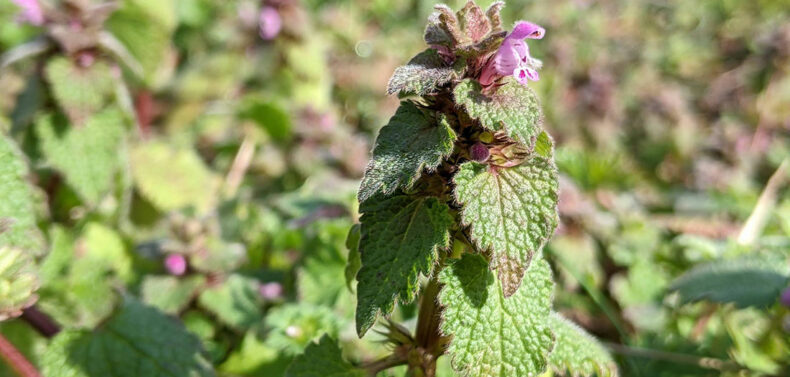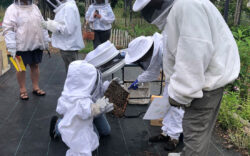Whether a postage stamp or acres large, you’ve likely spotted winter weeds appearing in your garden. Though there’s the blanket use of the word “weed,” some of these plants might be worth leaving in the ground. Here’s a collection of late winter/early spring weeds and how I handle them:
OK ON THE LAWN, A PAIN IN THE GARDEN: The purple deadnettle is a member of the mint family (you can tell from the square stem) and sports small, purple flowers and large, fuzzy, spade-like leaves folded on top of each other. In the lawn or a path, deadnettles are great. They’re one of the earliest blooming flowers, ready to provide food to pollinators on warm days before many other plants. In the garden, deadnettles are pests. The weed’s roots grow in a dense mat and can make cultivation difficult. Deadnettles also are a vector for mildew. Leaving a deadnettle close to your lettuce could turn your produce gray and fuzzy after a rainstorm. Some people plant deadnettle in their gardens, particularly in shady areas. Purple deadnettles are not native and, with their spreading nature, are sometimes labeled invasive.
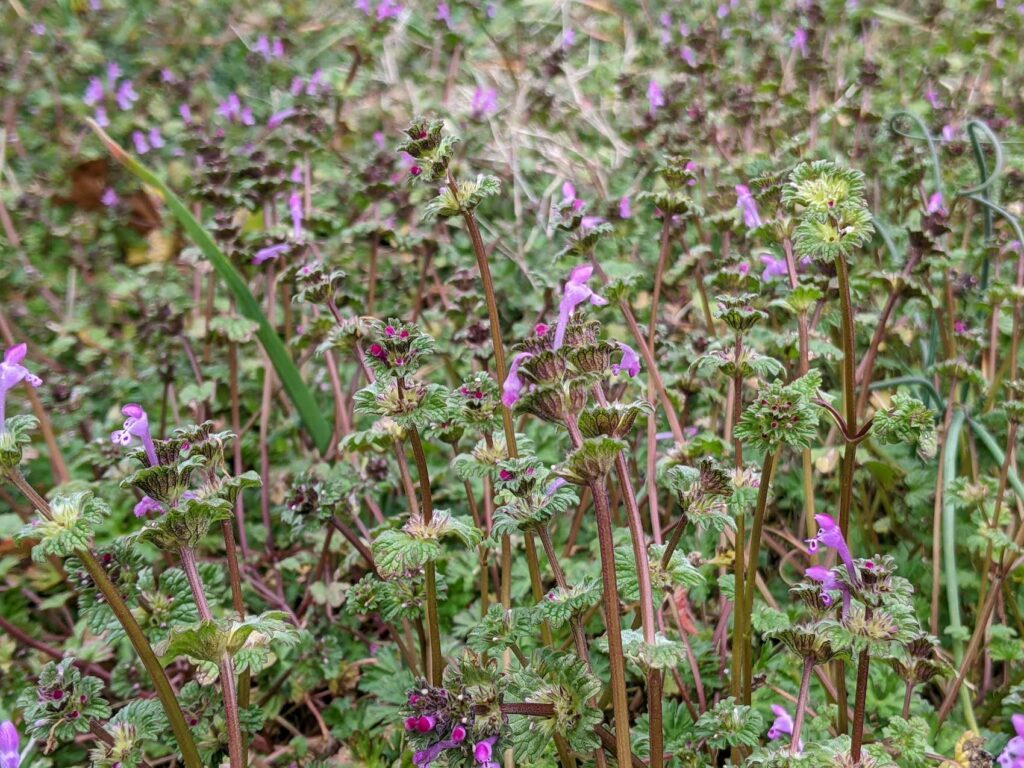
LIKE DEADNETTLE, BUT BETTER: Henbit flowers look almost exactly the same as deadnettle, and the two (both mint family members) often are confused. Henbit’s leaves are scalloped, and the roots don’t mat. I find weeding shallow-rooted henbit a breeze, and for that reason, I let it grow in the garden to out-compete other, tougher weeds and provide food for bees. I clear out henbit in any rows with tender greens, for the same reason I purge those rows of deadnettle.

POLLINATORS LOVE THEM; I HATE THEM: Thistles come into their full, awful glory in the summer, but if you can pull those boogers up now, do it. Invasive bull thistles in particular like to camp out in some of the worst, empty soil and seed themselves where there’s little competition. These plants grow around last year’s bonfire pits and in sunny spots with poor soil. They form long, sharp spines on their leaves, and without any fertilization can grow 6 feet tall. Thistles are touted as a win for pollinators, so I’m planting some sea holly in my beneficial insects garden this year while killing any bull thistle I can find. I’ve tried running bull thistles over with a lawnmower to keep them contained, but those suckers will bloom against the ground to propagate.
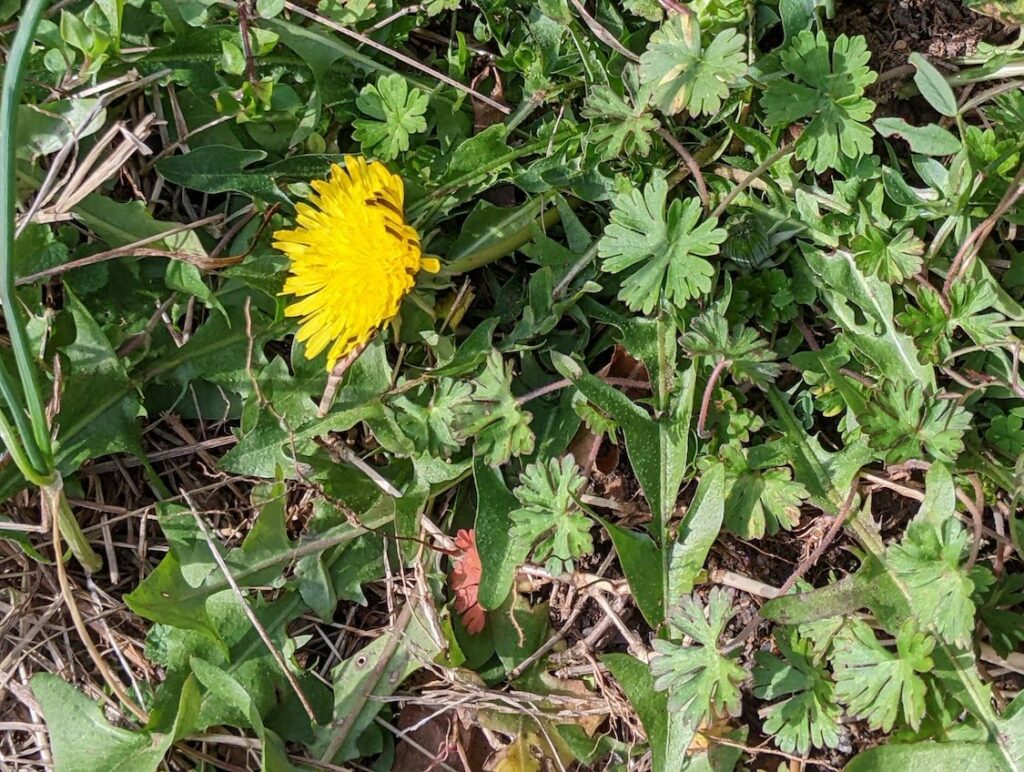
NOT AS BAD AS YOU THINK: Dandelions get a bad rap, and left completely unchecked, they can overwhelm a garden. But dandelions do something pretty amazing—they tend to grow in compacted soil, where their long tap roots start to break up the compaction. While they will take advantage of the garden beds, usually I find them in the lawn and borders. Often, I leave the plant and deadhead any closed flowers to stop the puff-ball seeds from flying.

I LOVE IT SO MUCH, I SEED IT: Not everyone loves vetch as much as I do. Shallow roots make it easy to pull up, but vetch is notoriously sticky and will adhere itself to any pants leg, glove or shirt sleeve it can touch. Vetch is a nitrogen fixer and leaves behind usable nitrogen for other plants to gobble after it dies. I seed it around fences to help slow the spread of Bermuda grass and give the goats some forage. Ava and Val ignore the vetch until it’s goat-head height, then lop it off with gusto.
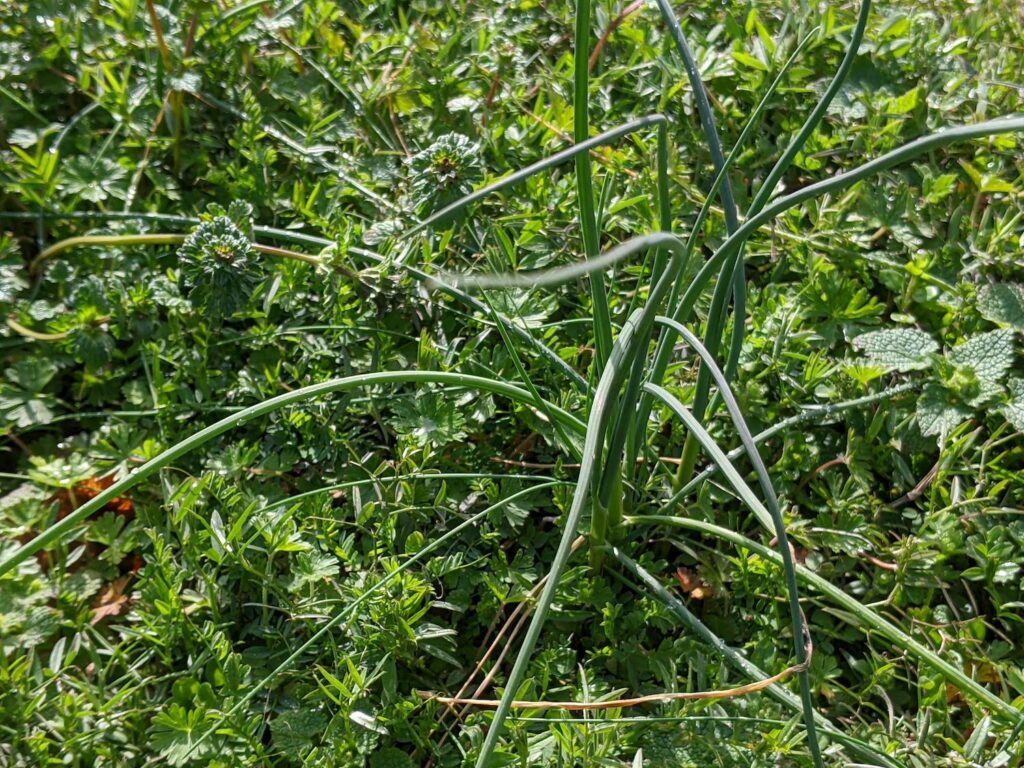
MANAGEABLE: Wild onions and garlic grow long, thin leaves in clumps from tiny bulbs. Though a perennial, folks notice wild garlic now because it’s the tall green wads in a mostly gray, brown yard. If you try to clear them out of the ground, you’ll likely break the brittle stems instead of pulling out the bulbs. Particularly large chunks are worth digging out, but most wild garlic is managed by trimming with a lawn mower or weed whacker. In the garden, I try to pull them up before they set new bulbs in the late spring. Wild garlic hates competition. Bulbs can remain dormant or send up only a few sickly stalks if other plants shade them out early and out-compete them for nutrients. The rows where I overwintered kohlrabi, cabbage and lettuce have few wild garlic bulbs, compared to my leaf-bitten, frozen and failed bok choy row.
Like what you just read? Support Flagpole by making a donation today. Every dollar you give helps fund our ongoing mission to provide Athens with quality, independent journalism.



